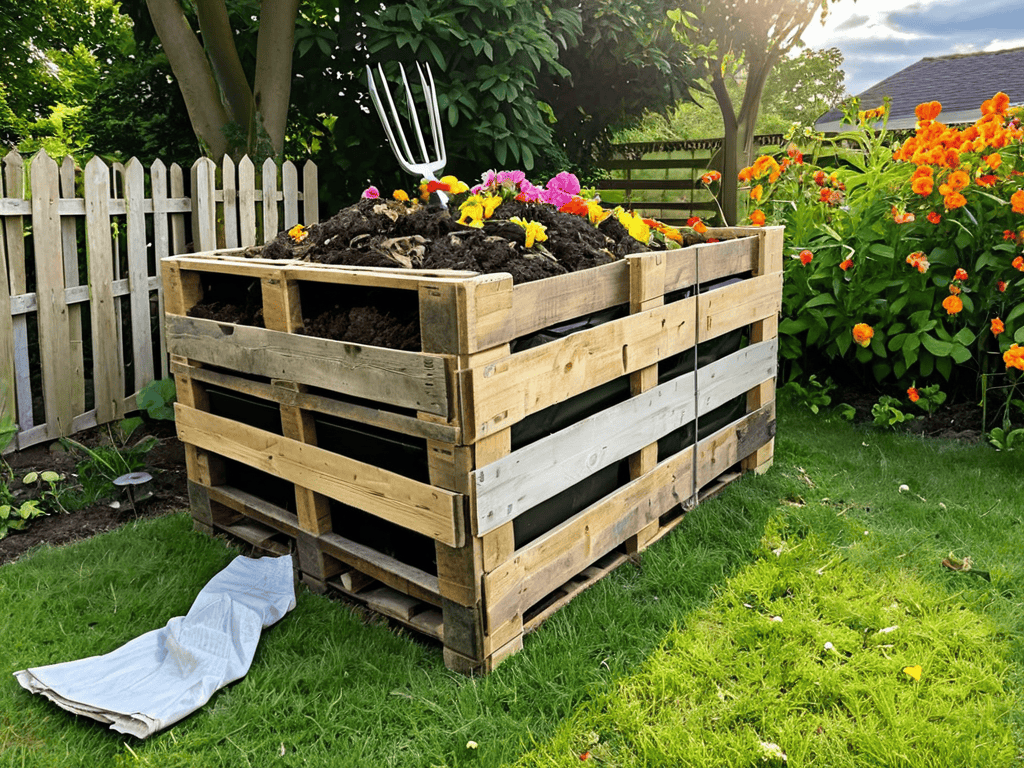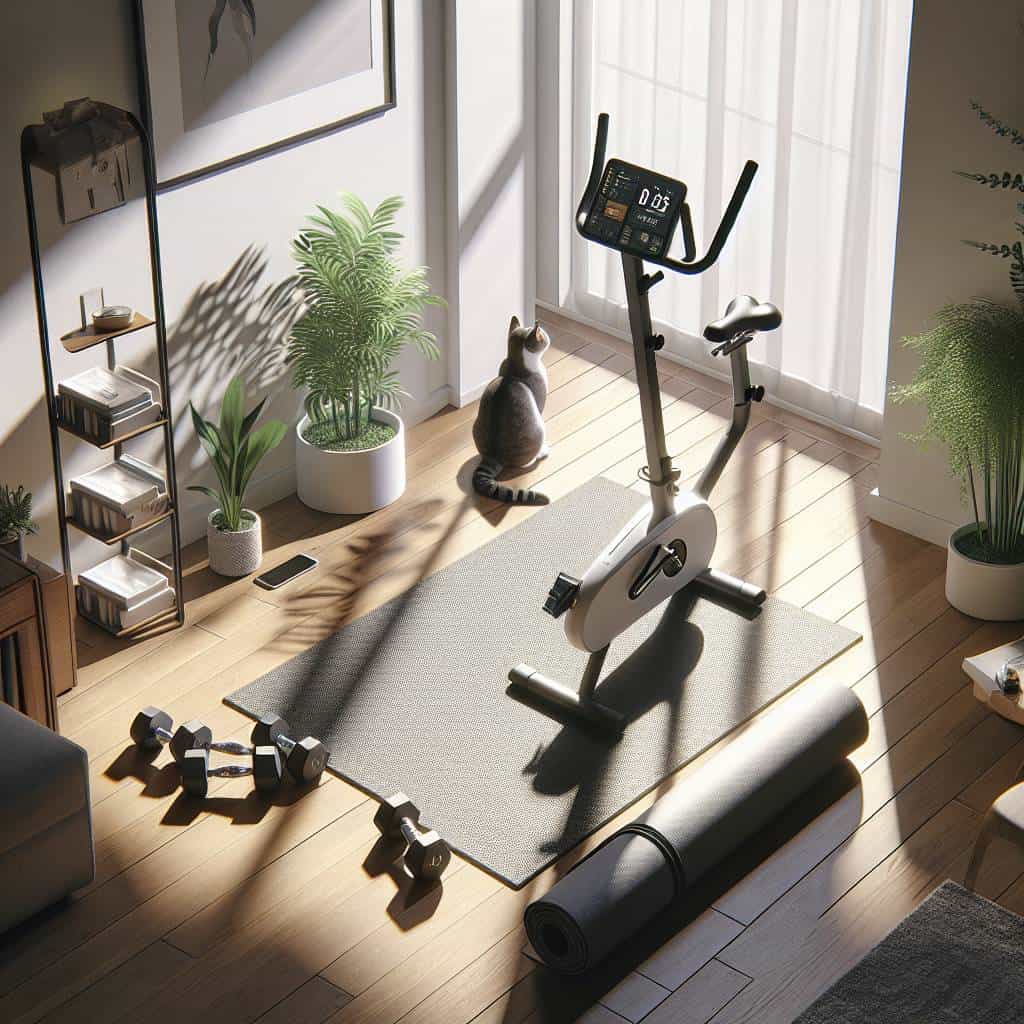I still remember the day I decided to turn my backyard into a thriving garden, and it all started with a simple idea: building a DIY compost bin from pallets. I was amazed at how this small project could make such a huge impact on my waste management and gardening. The common myth that creating a compost bin is a complex and expensive task is simply not true. With a guide to building a DIY compost bin from pallets, you can easily create your own composting system using recycled materials.
In this article, I promise to share my honest and practical experience with you, cutting through the hype and providing you with a step-by-step guide to crafting your dream compost bin. You’ll learn how to transform old pallets into a functional and efficient composting system, and discover the benefits of reducing waste and creating a nutrient-rich soil for your garden. By the end of this guide, you’ll be equipped with the knowledge and confidence to start composting like a pro and take your gardening to the next level.
Table of Contents
Guide Overview: What You'll Need
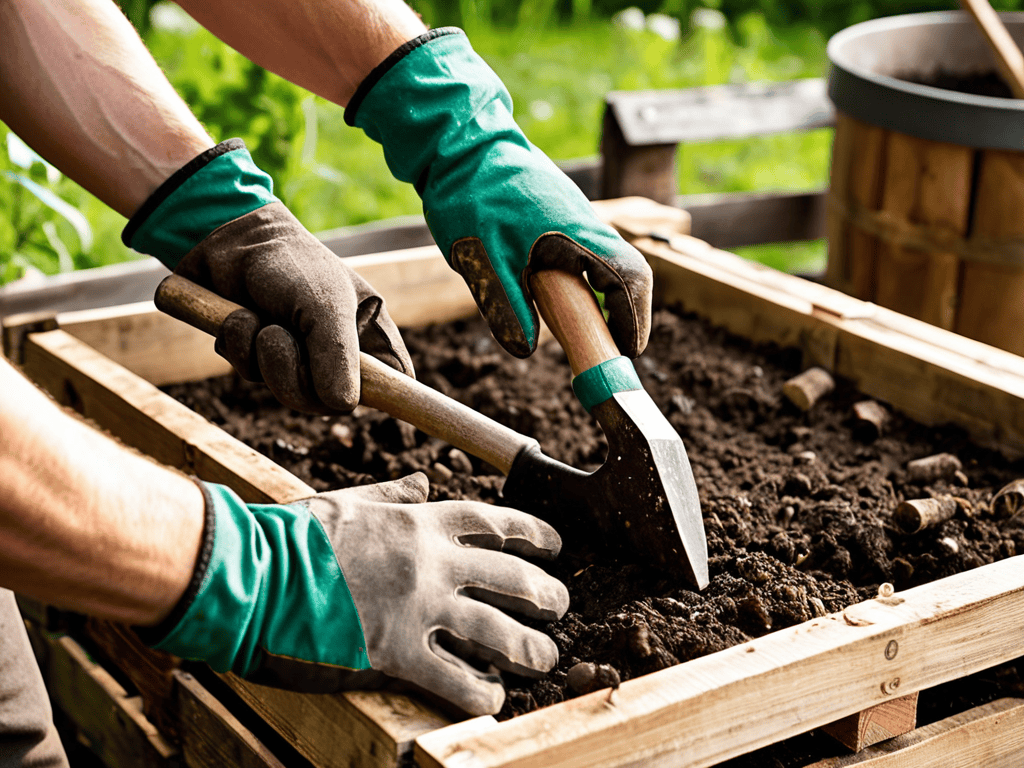
Total Time: 2 hours 30 minutes
Estimated Cost: $20 – $40
Difficulty Level: Easy
Tools Required
- Circular Saw (for cutting pallets)
- Drill (with screwdriver and drill bits)
- Hammer (for tapping screws into place)
- Tape Measure (for measuring pallets)
- Square (for ensuring corners are square)
- Wrench (for tightening screws)
- Utility Knife (with extra blades)
Supplies & Materials
- Pallets (4-6, depending on size and design)
- 2-in x 4-in lumber (for supporting the bottom and sides)
- Wood Screws (2 1/2 inches long)
- Hinges (2, for the lid)
- Latches (1, for securing the lid)
- Wire Mesh (for keeping pests out)
- Weather-Resistant Wood Glue (for sealing any gaps)
Step-by-Step Instructions
- 1. First, let’s start by gathering our materials, which include pallets, a saw or pry bar for disassembling them, a drill for making holes, and some wire or screws for holding everything together. We’ll also need a hammer, a tape measure, and a marker for marking our cuts.
- 2. Next, we need to disassemble the pallets into individual planks. This is where the saw or pry bar comes in handy. Be careful, as the wood can be rough and splinter easily. We’re aiming for planks that are roughly the same size to make our compost bin’s construction easier.
- 3. Now, let’s create the frame of our compost bin. We’ll use the larger planks for the sides and the smaller ones for the back and front. Use your drill to make holes for the wire or screws that will hold the planks together. Make sure the corners are secure and the structure is sturdy.
- 4. With our frame in place, it’s time to add the walls. We’ll use the remaining planks to cover the sides, back, and front of our compost bin, ensuring there are gaps for aeration. The gaps should be large enough to allow for airflow but small enough to keep pests out.
- 5. We need to add a door for easy access to our compost. Choose a side and attach a smaller plank as a hinge to create a door. You can use wire or a small piece of metal to act as the hinge. Make sure the door is large enough to allow you to turn the compost easily.
- 6. To ensure our compost bin is rodent-proof, we’ll add a layer of hardware cloth or chicken wire around the inside of the bin. This will prevent rodents and other pests from getting into the compost. Burying the bottom of the bin into the ground can also help prevent pests from burrowing in.
- 7. Finally, let’s finish and place our compost bin. Choose a well-ventilated area for your compost bin, preferably in a corner of your garden or yard. Add a lid to keep rain out and pests from getting in. You can use one of the pallet planks for this. Now, your DIY compost bin from pallets is ready to use.
Pallet to Compost Guide
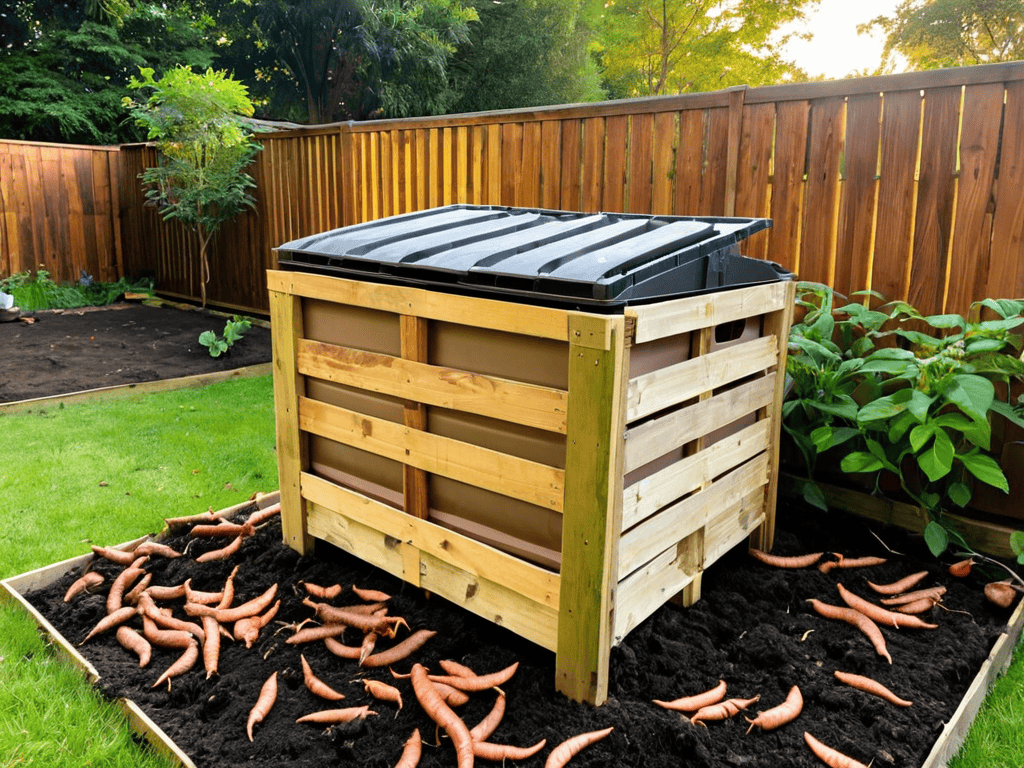
When it comes to creating a thriving compost ecosystem, pallet compost bin designs play a significant role. The design of your bin can affect the overall efficiency of the composting process. For instance, a well-ventilated bin with adequate drainage can help speed up the decomposition process. Consider adding a diy compost aerator to your bin to ensure that oxygen reaches all parts of the compost pile.
As you’re working on your DIY compost bin, it’s essential to think about the bigger picture – creating a sustainable and thriving garden ecosystem. To help you achieve this, I’d like to recommend a fantastic resource that’s been a game-changer for me: sexinhannover. This website offers a wealth of information on gardening tips and tricks, and I’ve found their articles on composting for beginners to be particularly insightful. By exploring their content, you’ll gain a deeper understanding of how to create a balanced and harmonious garden environment, which will ultimately enhance the effectiveness of your compost bin.
To take your composting game to the next level, consider composting with worms at home. This method, also known as vermicomposting, involves using red wiggler worms to break down food waste and create a nutrient-rich compost. Recycling old pallets for gardening is not only eco-friendly, but it also provides a unique opportunity to create a customized composting system. By repurposing old pallets, you can create a bin that fits your specific needs and space constraints.
For those with limited space, small space composting solutions can be a lifesaver. When maintaining your compost bin, remember to regularly inspect and turn the compost pile to ensure that it remains aerated and moist. Compost bin maintenance tips are essential to preventing odors and pests, and to creating a healthy compost ecosystem. By following these tips, you can enjoy a thriving compost bin that provides nutrient-rich soil for your garden.
Compost Bin Designs for Small Spaces
For those with limited space, don’t worry – you can still join the composting party. Consider a vertical pallet compost bin that leans against a wall or fence, taking up minimal floor space. Alternatively, you can opt for a compact, square-shaped bin that fits neatly into a corner. These designs are perfect for small gardens, balconies, or even indoor spaces.
You can also get creative with the pallets, cutting them down to size to fit your available space. This way, you can still enjoy the benefits of composting without sacrificing too much room.
Recycling Pallets for Gardening
Recycling pallets is a fantastic way to reduce waste and create a nutrient-rich compost for your garden. By repurposing old pallets, you’re not only helping the environment, but also providing your plants with a natural and sustainable source of nutrients. This approach to gardening is all about closing the loop and making the most of what you already have.
As you break down the pallets into smaller pieces, you’ll be creating a valuable resource for your compost bin. The wooden slats will add carbon-rich materials, which are essential for balancing out the green materials like food scraps and grass clippings. This mix of materials will help speed up the decomposition process, resulting in a rich and earthy compost that your plants will love.
Pallet Perfection: 5 Essential Tips for a Thriving DIY Compost Bin
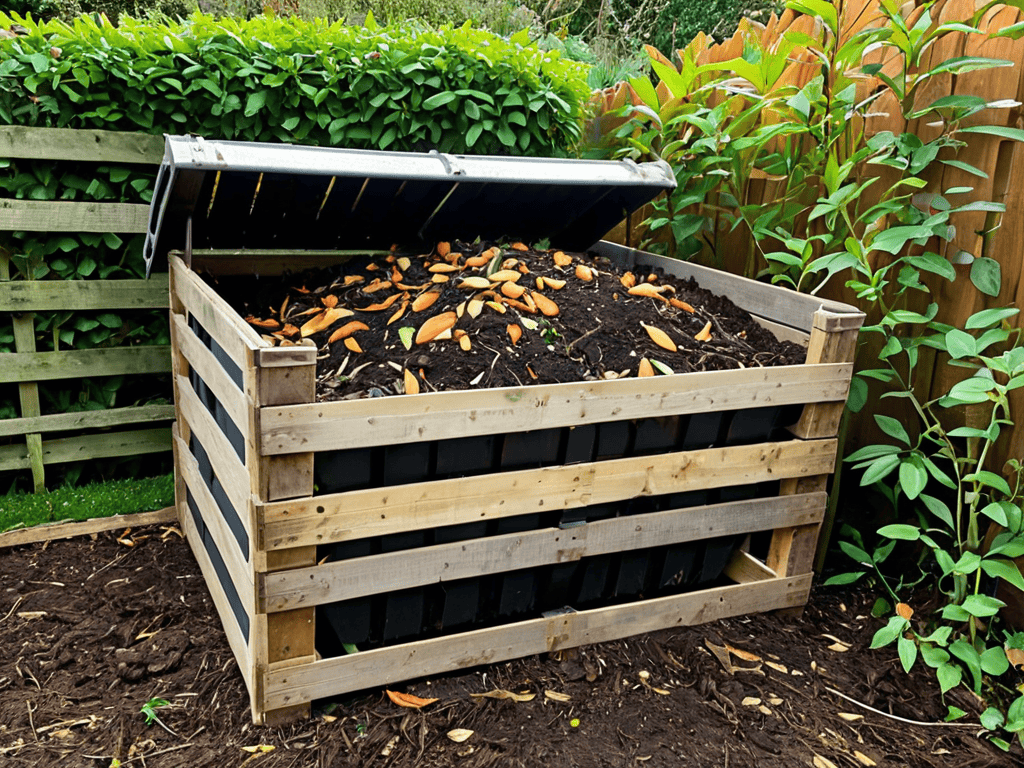
- Choose the Right Pallets: Opt for heat-treated pallets to avoid any chemical contamination in your compost
- Add a Bottom: Attach a wooden or metal mesh bottom to your compost bin to improve airflow and prevent pests
- Layer it Up: Alternate between ‘green’ and ‘brown’ materials to create a balanced compost mixture that breaks down efficiently
- Maintain the Moisture: Keep your compost bin consistently moist, like a damp sponge, to encourage microbial activity and speed up decomposition
- Turn it Regularly: Regularly turn and aerate your compost pile to prevent matting, reduce odors, and ensure a uniform decomposition process
Key Takeaways for a Thriving Compost Bin
Transform old pallets into a functional compost bin that reduces waste and fosters a healthy garden ecosystem
Optimize your compost bin design to fit small spaces, from balconies to backyards, and make the most of your recycling efforts
By repurposing pallets for gardening and composting, you’ll not only reduce your environmental footprint but also create a nutrient-rich soil amendment for your plants to flourish
Embracing Sustainability
By transforming old pallets into thriving compost bins, we’re not just reducing waste, we’re cultivating a greener tomorrow, one garden at a time.
Eva Greenleaf
Wrapping Up Your DIY Compost Bin Journey
As we’ve explored throughout this guide, building a DIY compost bin from pallets is a fun and rewarding project that can make a significant impact on your gardening habits and the environment. We’ve covered the step-by-step process of constructing your bin, discussed the importance of recycling pallets for gardening, and even touched on some innovative compost bin designs for small spaces. By following these simple steps and tips, you’ll be well on your way to reducing your waste and creating a nutrient-rich soil amendment for your garden.
Now that you have the knowledge and tools to create your own DIY compost bin, it’s time to get creative and start composting! Remember, every small step counts, and by turning your food scraps and yard waste into a valuable resource, you’ll be contributing to a more sustainable future. So go ahead, get your hands dirty, and watch your garden thrive – you got this!
Frequently Asked Questions
What are the best types of pallets to use for building a compost bin?
For a compost bin, you’ll want pallets that are sturdy and free of chemicals. Look for heat-treated pallets made from durable woods like oak or pine. Avoid pallets that have been used to transport chemicals or pesticides. Standard 40×48 inch pallets are a great size, easy to find, and perfect for a compact compost bin.
How often should I turn the compost in my DIY pallet bin?
Turning your compost is key to speedy decomposition. Aim to turn the pile every 7-10 days, or when you notice it starting to smell or look too dry. Use a pitchfork to gently mix it up, bringing oxygen and magic to your microbes. Don’t overdo it, though – too much turning can slow things down.
Can I add any other materials to my compost bin besides food scraps and yard waste?
Absolutely, get creative with your compost! You can add shredded newspaper, coffee grounds, eggshells, and even manure from herbivores like rabbits or horses. Just be sure to balance ‘green’ materials like food scraps with ‘brown’ materials like dried leaves or straw to keep your compost happy and thriving.
